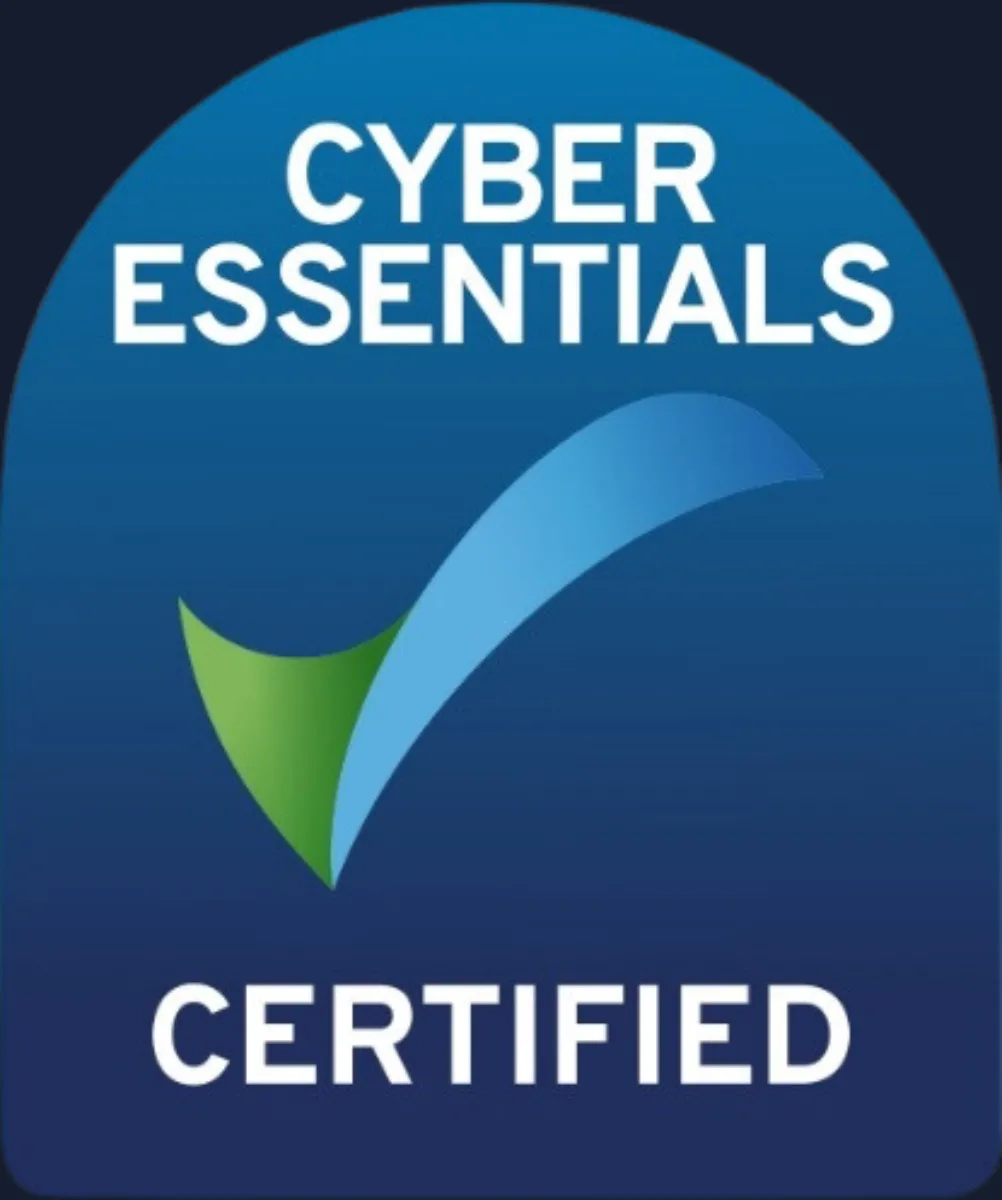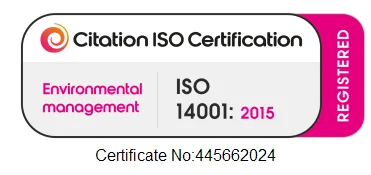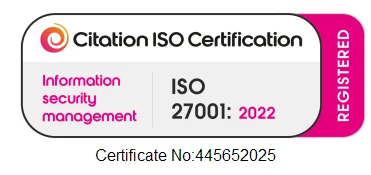VoIP Phone Systems
VoIP Phone Systems are the progression from the old PSTN/ISDN phone systems. PSTN lines will be switched off in 2025 due to the deteriorating hardware and cabling used to support these lines, as well as a lack of engineering resources to maintain the infrastructure. ‘Read our ‘The big S’itch off‘ blog for more information.
Since the advent of the internet, we have been using it to connect with others. The internet has rapidly taken over the majority of physical communications.
What is VoIP?
VoIP, or Voice over Internet Protocol, is the process of transmitting voice data across a network in real-time, converting the sound of your voice into digital packets, transferring them across the internet, decoding them, and playing them as sound at the other end. All in a nanosecond. Simple, right?
Actually… yes. The infrastructure for VoIP to function has been in place for a long time, and most routers, firewalls, and switches already have the necessary software to handle VoIP calls over the network.
Diverting away from a Landline can be pretty daunting and is often seen as a significant leap forward in technology. I’ve been using VoIP for years. If you’ve ever made a voice call using WhatsApp or Facebook, you’ve used VoIP.
VoIP Terminology
When discussing VoIP Phone Systems, you will encounter several acronyms related to the setup and operation of the system.
PBX – Private Branch eXhange. This is a general term for the phone system and software used to manage incoming and outgoing calls.
SIP – Session Initiation Protocol.
SIP Trunk – I would describe this as your internet phone system identifier. Phone numbers are assigned to a SIP trunk. When someone calls the phone number, it is sent to the SIP Trunk and forwarded to the PBX, where the trunk is registered.
SIP Channel – A channel or seat, as they are sometimes referred to, is the indication of how many simultaneous calls can be made on the SIP Trunk.
ALG – Application Layer Gateway is a feature commonly found on routers and firewalls that prevents issues caused by inspecting VoIP traffic as it passes through the network.
VLAN – Virtual Local Area Network. VLANs are used within your local network. These can be used for VoIP networks, Wireless networks, or to separate servers from workstations, among other purposes. In this case, they will be used to separate VoIP traffic from DATA traffic. On a busy network, VoIP quality can suffer if it is used simultaneously with data. Some businesses also choose to install an additional dedicated broadband line for VoIP use.
Cloud Hosted or Locally Hosted
Apart from the server’s location, there is little to distinguish the two.
A locally hosted server will cost you more to set up, as you will need to purchase a physical server, whereas a hosted solution would be subscription-based. For some, this may sound like a good idea, but then there is the added cost of maintaining and upgrading the local servers, as well as replacing them should they ever fail. This is all built into the subscription of a hosted VoIP Phone System, and you are only responsible for managing the software you load onto it. You do pay more overall with a hosted server, but there are other benefits to consider.
Connectivity
If the internet connection at the location of your locaserver were to fail, the phone system would be rendered inoperable. Data centres that host servers have multiple broadband connections, providing them with an uptime of 99.9%. If you are using a hosted server company and its server connection goes down, the server will still be functioning. This is when a cloud-hosted server shows its benefits.
During the pandemic, many businesses switched to hosted VoIP systems to allow remote workers to make and receive calls as if they were in the office.’ See our ‘What do I need to work ‘from the blog
It’s not that you can’t do this with a locally hosted phone system, but you would also need to configure your firewalls to allow the phone system users through without exposing the rest of your network. This can be more complex for those who are not professionals, and it could be costly to employ a professional if you do not have an in-house IT department.
In botservers, if the servers are inaccessible for any reason, you can request that your SIP account be diverted to a mobile number to maintain contact with the outside world.
VoIP Hardware
Many companies provide handsets and peripherals to work with your phone system. Most work the same way, and it is aesthetics and personal preference that separate them. We currently recommend Yealink handsets for their functionality, looks and lifetime warranty. There is always a softphone option, which is a program that runs on your workstation to make and receive calls using a headset or hands-free. This has become a more popular option over the past few years, as it significantly reduces the cost of implementing a new phone system.
Hosted Phone System Software Options
Many companies offer PBX software, which can vary in price and functionality. I’m going to focus on 3CX, mainly because it’s what we use and it’s my blog.
We choose to use 3CX because of its reasonable pricing structure and extensive features.
VoIP Number Porting
When switching to a VoIP phone system, you will need to port your existing company number (s) to the SIP trunk, which is handled by the company implementing the new system. It will require you to port your number from your current supplier to the new one. Porting a standard number can take anywhere between 14 and 30 days. Porting an NGN (Non-Geographical Number) can take up to 90 days.
VoIP Pricing
3CX pricing is based on the number of seats or SIP channels required, with the option for unlimited extensions. This works well for large companies with numerous employees who frequently call each other, as they are not included in the SIP channel allowance. These would be classed as an internal call. This also benefits small businesses, as the likelihood of multiple employees being on the phone simultaneously is minimal. We use the one-third rule when determining how many SIP Channels a business needs. One Channel for every three users. 3CX offers a free licence for up to four channels with reduced features, making it a perfect option for starting a small business.
SIP Channels will cost around £10 p/m each.
The hosted server costs approximately £20 per month.
VoIP Phone System Features
The fully licensed 3CX package includes many features a business needs to communicate effectively.
- Digital receptionist
- Voicemail (sent as an email)
- Call queues
- Voice, video, web meetings
- Ring groups
- Recordings
- Monitoring and Reporting
- Mobile App
You can find out more on the 3CX website
3CX pro license cost starts at £20 per month for four channels
VoIP Integration
3CX has always been very versatile when connecting to third-party software. Connect 3CX directly to your CRM software and bring up a client record when a matching phone number is used to call into your phone system.
The release of V18 in August introduced the Teams Direct Routing Integration, which enables your PBX to connect to your Office 365 account, allowing you to make and receive calls on both platforms. An additional Office 365 Phone System License is required to use direct routing.
Summary
When choosing the right phone system for your business, here are some things to consider
- Local or Hosted? – Can you manage the hardware and network?
- PBX Licence? – Per user or SIP channel-based pricing? Does it have the features you need? Are there any additional charges?
- Hardware – Handset or Softphone with headset?
- Network – Can you use your existing broadband, or do you need another line?
If you would like to know more, if you’re currently looking for a phone system, please get in touch with hello@c-it.co.uk or call 01908237007
Recent Blogs
Related posts
New Year, New Security Standards: Why This Is the Year Your Business Needs Cyber Essentials
As we step into 2026, businesses across the UK are setting ambitious goals. But there's one resolution that should sit at the top of every [...]
Before You Renew: How to Review Your Current IT Provider
As the year draws to a close, you naturally start reviewing budgets and renewing supplier contracts – but what about your IT support? If your [...]
5 Ways to Make 2026 the Year Your IT Works Smarter, Not Harder
We associate New Years with a fresh start, so what better time to take a fresh look at the way your technology works for you. [...]








